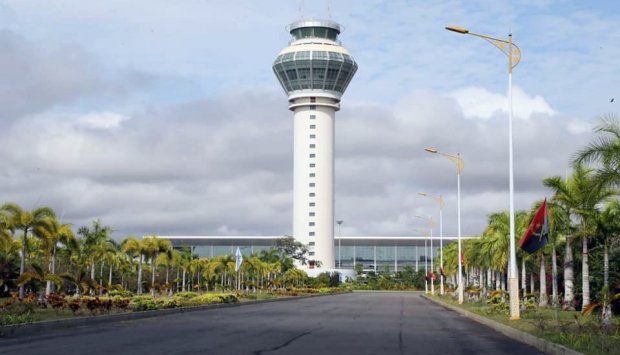A press conference today at the AAIAN, attended by airport and transport authorities and Angolan airline TAAG, the first to debut with passenger flights said that mobility and service issues are being taken care of so that, by 31 March next year, international flights can be transferred to the new airport.
As of Sunday, TAAG’s domestic flights will begin at AIAAN, 40 kilometres from Luanda, starting with connections to Cabinda with four daily flights.
António Pombal (ATO), the general director of ATO, the airport’s temporary operator, rejected the idea that international companies are resisting moving to the new airport, explaining that it is a gradual transfer.
‘What we have is a process of transferring the operations we are carrying out and this requires identifying the risks to be mitigated, the impacts to be taken into account, certification conditions and the quality of service we are going to provide to passengers,’ he explained.
Among the conditions to be ensured, he highlighted supply, mobility, service, accommodation, ‘a series of elements that are preponderant for the decisions of companies’ whose decision-making centres are in other countries.
The manager also spoke about the change of codes and other processes that must be taken care of, pointing out that a decree from the Ministry of Transport requires all companies to operate in the AAIAN by 31 March, adding that all the airlines took part in the drills.
The executive chairman of Angolan flag carrier TAAG also denied that other operators were resistant to the AIAAN.
‘The aviation business is in phases. What’s good for TAAG is good for the others, the standards are the same, the standards are international, what TAAG has to fulfil, the others also have to fulfil, we’re going to oil the machine so that everyone finds this airport in the best conditions,’ said Nelson Oliveira.
António Pombal said that the existing services are being installed progressively, and there are currently more proposals than available space.
‘We’re seeing who meets the conditions to activate at the airport, as we don’t have many spaces,’ he said, indicating that a catering space will be open when domestic flights start. A hotel is being built in the area with capacity for 350 rooms.
‘This is one of the reasons for the gradual transfer. We’ll have to speed up some processes,’ he acknowledged.
He said all service providers operating at the airport will be graded, defining the quality of service they must provide. If they don’t reach these levels, corrective measures will be adopted.
According to António Pombal, ATO still has no date for leaving the new airport.
‘I can’t say how long it will last,’ he said, adding that the organisation was set up to transfer all the current 4 de Fevereiro Airport activity to AIAAN. It was necessary to create an operator to ensure this process, having launched a tender for the concession of the new airport, which, according to Pombal, is at a decisive stage.
As for mobility, public transport links will be strengthened, and the airport will be accessible by road and rail.
The Luanda Railway (CFL) will operate 12 daily services and have a transport capacity of 700 passengers. It has already started issuing ‘corporate’ passes for frequent users.
The chairman of the CFL, Manuel Kandakanda, said that the fares (5,000 kwanzas for the Express journey) were based on the prices paid in other countries in the region, such as South Africa.
On the other hand, he emphasised that the branch, like others, ‘is a source of business for the company’, although rail transport is not profitable.
‘We operate a model of complementarity with other modes of transport; we don’t make up for the investment with passenger transport,‘ he stressed, emphasising that “without subsidies, you have to do ”immeasurable gymnastics’ to meet the demands of the train to the airport.
In the case of buses, 35 of the Empresa de Transportes Coletivos Urbanos de Luanda (TCUL) will run, with a capacity for 61 passengers, linking the AAIAN, located in Icolo and Bengo province, to ten destinations where the main population centres of Luanda province are located.



